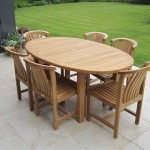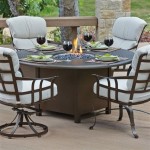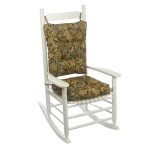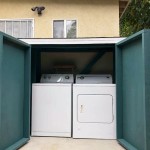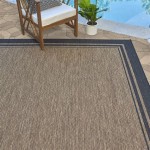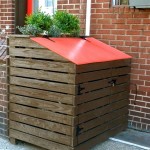Hanging Outdoor Chairs Without Stands: Exploring Suspension Options and Installation
Hanging outdoor chairs offer a unique seating experience, combining comfort and relaxation with a gentle swaying motion. While many models are designed for use with a dedicated stand, eliminating the need for a supporting structure, a significant advantage is the flexibility to install these chairs in various outdoor locations without the spatial limitations of a stand. This article explores the options available for hanging outdoor chairs without stands, focusing on suitable anchor points, installation techniques, and safety considerations.
The absence of a stand allows for integration into existing architectural elements or natural structures, maximizing space utilization and offering a customizable aesthetic. The key to a successful installation lies in understanding the weight limitations of the chosen anchor point and implementing appropriate safety measures. Furthermore, the selection of suitable hardware and installation techniques can significantly extend the lifespan of both the chair and the supporting structure.
Identifying Suitable Anchor Points
The primary concern when installing a hanging chair without a stand is identifying a sufficiently strong and stable anchor point. Several options exist, each with its own advantages and considerations.
Ceiling Joists/Beams: Exposed wooden ceiling joists or beams are a common and often readily available option, particularly on covered porches or patios. To ensure suitability, it is crucial to verify the joist's structural integrity and weight-bearing capacity. This may involve consulting with a structural engineer or referring to building codes. The joist should be constructed of solid wood and free from signs of rot, insect damage, or other compromising factors. When attaching to a joist, use lag screws or through-bolts that penetrate deeply into the wood, ensuring a secure and lasting connection. The diameter and length of the fasteners should be appropriate for the weight of the chair and occupant.
Tree Branches: Mature, healthy tree branches can provide a natural and aesthetically pleasing anchor point. However, careful assessment is essential. The branch must be thick enough to support the weight of the chair and occupant with a significant safety margin. A general rule of thumb is that the branch should be at least 8 inches in diameter and located relatively close to the tree's trunk to minimize leverage. Inspect the branch for any signs of disease, cracking, or weakness. Consider the type of tree; some species are more prone to brittle branches. Using straps or ropes that distribute the weight evenly around the branch's circumference is crucial. Avoid using chains or metal hardware that can damage the bark and potentially girdle the branch. Regular inspections of the branch and suspension system are necessary to ensure continued safety.
Pergola Structures: Pergolas offer a potentially suitable anchor point, provided their structural integrity is verified. The overhead beams of a pergola are often constructed of sturdy wood, but it is essential to assess their load-bearing capacity. Similar to ceiling joists, the beams should be free from defects and securely fastened to the pergola's posts. Using appropriate hardware, such as lag screws or through-bolts, is crucial for a secure and lasting connection. Consider the overall design of the pergola and whether it is adequately anchored to the ground or a foundation. A pergola that is not sufficiently stable may not be suitable for supporting a hanging chair.
Dedicated Structural Supports: In cases where existing anchor points are not suitable or desired, a dedicated structural support can be constructed. This involves installing a heavy-duty beam specifically designed to support the weight of the chair. This approach offers the greatest control over safety and stability but requires careful planning and construction. Consult with a structural engineer to determine the appropriate size and type of beam, as well as the necessary foundation or anchoring system. A dedicated support can be integrated into existing structures or designed as a standalone element.
Installation Techniques and Hardware
Once a suitable anchor point has been identified, the next step is to select appropriate hardware and implement proper installation techniques. The hardware must be strong, durable, and corrosion-resistant to withstand outdoor conditions. The installation method should ensure a secure and reliable connection between the chair and the anchor point.
Hardware Selection: The choice of hardware depends on the type of anchor point and the design of the chair. Common hardware components include:
- Eye Bolts/Hooks: These are used to create a secure attachment point on the anchor structure. Eye bolts should be rated for a weight capacity significantly higher than the combined weight of the chair and occupant. Hooks can be used in conjunction with chains or ropes to adjust the chair's height.
- Carabiners: These are metal loops with spring-loaded gates, used to connect various components of the suspension system. Carabiners should be made of high-strength steel or aluminum and rated for a weight capacity that exceeds the expected load.
- Chains: Chains can be used to adjust the chair's height and provide a flexible connection. Chains should be made of galvanized steel or stainless steel to resist corrosion. The chain's links should be strong enough to withstand the weight of the chair and occupant.
- Ropes/Straps: Ropes and straps can be used to suspend the chair, particularly from tree branches. Ropes should be made of durable, weather-resistant materials such as nylon or polyester. Straps offer a wider surface area, reducing stress on the branch. Ensure the ropes or straps are rated for the appropriate weight capacity.
- Springs: Springs can be installed in the suspension system to provide a smoother, more comfortable ride. The spring should be rated for the weight of the chair and occupant and designed for outdoor use.
Installation Methods: The installation method depends on the type of anchor point and hardware being used.
- Ceiling Joists/Beams: Drill pilot holes into the joist or beam before installing eye bolts or lag screws. This prevents the wood from splitting. Use a wrench to tighten the hardware securely. For through-bolts, use washers on both sides of the joist to distribute the load.
- Tree Branches: Wrap straps or ropes around the branch, ensuring the weight is evenly distributed. Use knots that are designed for load-bearing applications, such as a bowline or a figure-eight knot. Avoid using knots that can slip or loosen under tension. Regularly inspect the straps or ropes for wear and tear.
- Pergola Structures: Follow the same installation procedures as for ceiling joists or beams. Ensure the hardware is securely fastened to the pergola's beams.
- Dedicated Structural Supports: Follow the manufacturer's instructions for installing the support beam. Ensure the foundation or anchoring system is adequate to support the weight of the chair.
Regardless of the installation method, double-check all connections and hardware to ensure they are secure before using the chair. A test hang with a weight similar to an adult is recommended before using.
Safety Considerations and Maintenance
Safety is paramount when installing and using a hanging outdoor chair. Regular maintenance and inspections are essential to ensure the continued safety and longevity of the installation.
Weight Limits: Always adhere to the manufacturer's weight limits for both the chair and the anchor point. Exceeding these limits can lead to failure of the suspension system and potential injury. Consider the combined weight of the chair, occupant, and any additional items (e.g., cushions, blankets). Ensure the anchor point is capable of supporting this weight with a significant safety margin.
Regular Inspections: Conduct regular inspections of all components of the suspension system, including the anchor point, hardware, and chair itself. Look for signs of wear and tear, such as fraying ropes, corroded hardware, or cracks in the anchor structure. Replace any damaged or worn components immediately. Inspect tree branches regularly for any signs of disease, decay, or weakness.
Environmental Factors: Consider the impact of environmental factors on the suspension system. Exposure to sunlight, rain, and extreme temperatures can degrade ropes and straps over time. Protect the chair and suspension system from the elements whenever possible. Store the chair indoors during periods of prolonged inclement weather. Check for moisture around the anchor point, particularly if it is made of wood, as moisture can promote rot and decay.
Child Safety: Exercise caution when children are using or near the hanging chair. Provide supervision to prevent accidents. Ensure children understand the proper way to use the chair and avoid swinging excessively. Consider the placement of the chair to minimize the risk of falls. Do not allow children to climb on the chair or the suspension system.
Proper Usage: Use the chair only for its intended purpose – sitting and relaxing. Avoid using it as a swing or for any other activity that could put undue stress on the suspension system. Enter and exit the chair carefully to avoid sudden movements that could overload the anchor point. Distribute weight evenly within the chair to maintain balance and stability.
By carefully considering these safety recommendations and implementing appropriate maintenance practices, individuals can enjoy the benefits of a hanging outdoor chair without a stand while minimizing the risk of accidents.
Proper planning, careful installation, and regular maintenance are essential for ensuring a safe and enjoyable experience with hanging outdoor chairs without stands. Selecting the right anchor point, using appropriate hardware, and adhering to safety guidelines are critical for maximizing comfort and minimizing the risk of injury. By investing time and effort into these aspects, individuals can create a relaxing and aesthetically pleasing outdoor space.

Noble House Autry 46 In Black Hanging Outdoor Patio Egg Chair With Gray Cushions No Stand 83522 The Home

Encase Swing Outdoor Patio Lounge Chair Without Stand

Eei2654whibei By Modway Hide Outdoor Patio Swing Chair Without Stand White Beige Berk S Furniture Mattress

Layden Indoor Outdoor Wicker Hanging Egg Teardrop Chair No Stand

Hide Sunbrella Fabric Swing Outdoor Patio Lounge Chair Without Stand

Nicesoul Indoor Rattan Wicker Hanging Swing Egg Chair Without Stand Beige Max Capacity 265 Lbs Walmart Com

Outdoor Patio Egg Swing Without Stand Hanging Chairs

Hanging Egg Chair Indoor Outdoor Swing Without Stand Wicker Hammock With Cushion Chain Lounge For

Dreamline Single Seater Hanging Swing Without Stand For Balcony Garden Tan Dreamlineoutdoorfurniture

Metal Swing Hammock Egg Basket Chairs Without Stand Indoor Outdoor Patio Porch With Black Cushion H2ph039ot144 The Home

